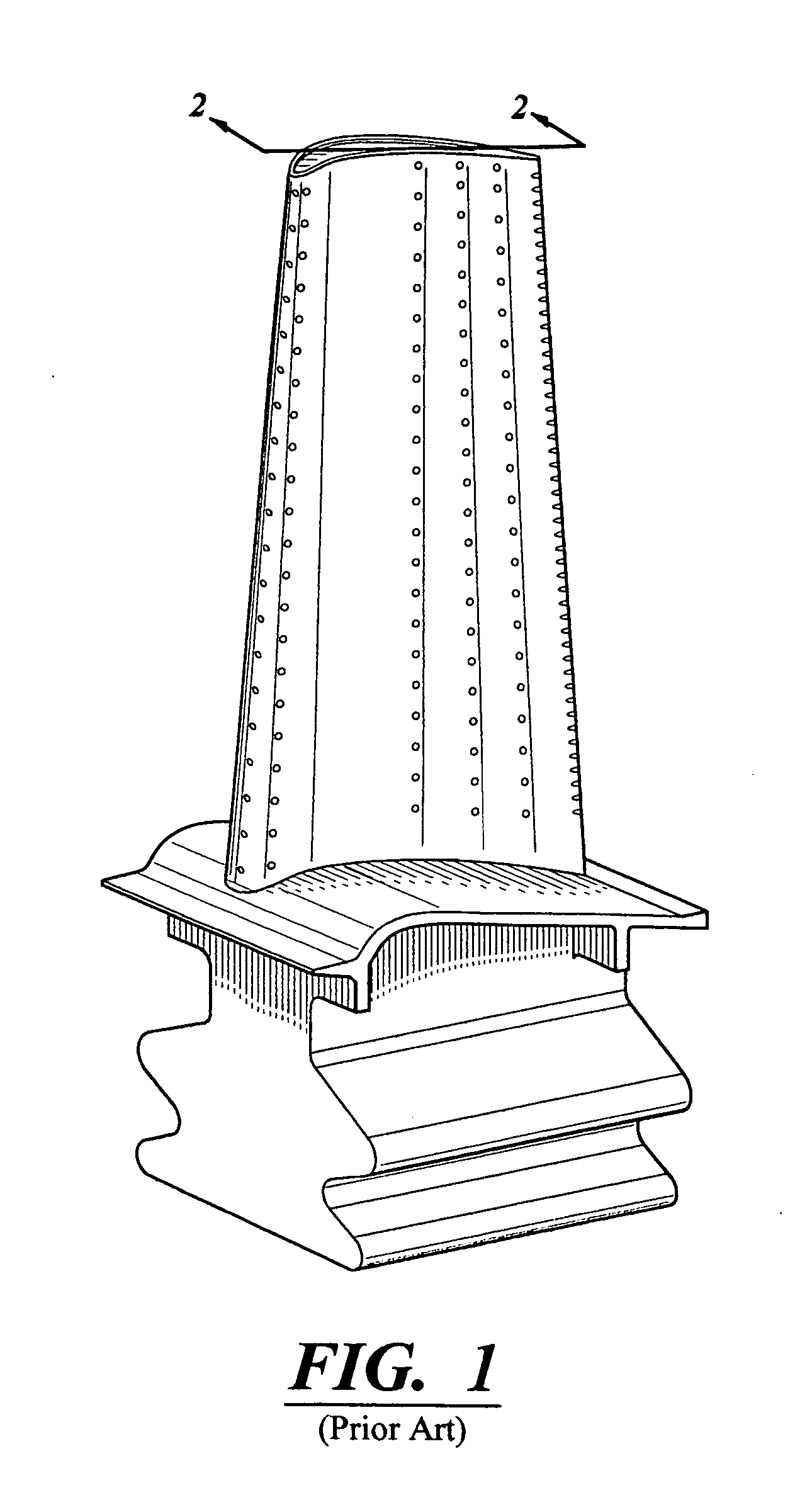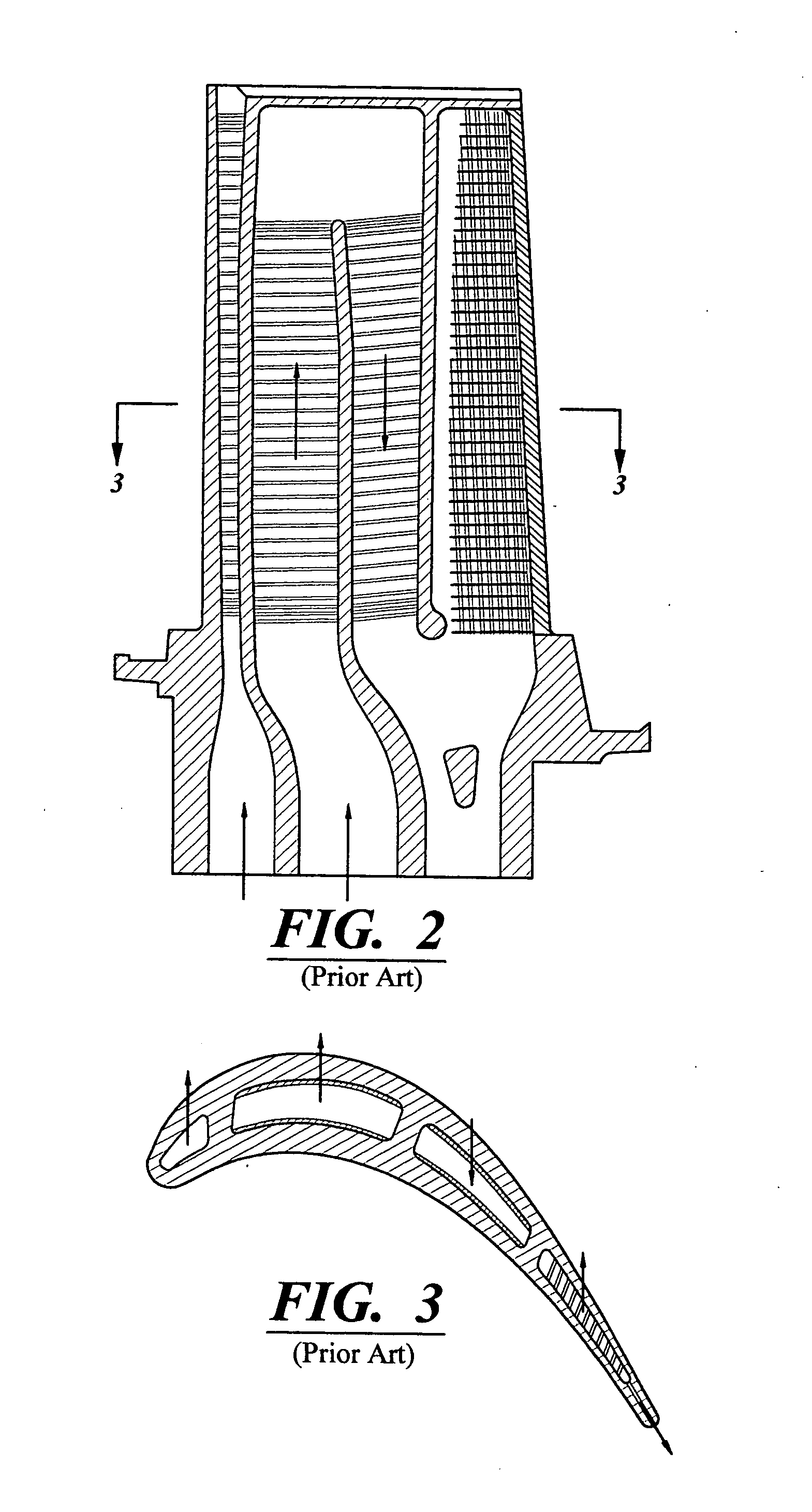Cooling system including mini channels within a turbine blade of a turbine engine
a cooling system and turbine blade technology, applied in the direction of machines/engines, liquid fuel engines, mechanical equipment, etc., can solve the problems of reducing the useful life of the turbine blade, the likelihood of failure, and localized hot spots, so as to increase the convective surface area, enhance the overall cooling effect of the cooling system, and increase the convective coefficient
- Summary
- Abstract
- Description
- Claims
- Application Information
AI Technical Summary
Benefits of technology
Problems solved by technology
Method used
Image
Examples
Embodiment Construction
[0028] As shown in FIGS. 4-8, this invention is directed to a turbine blade cooling system 10 for turbine blades 12 used in turbine engines. In particular, the turbine blade cooling system 10 is directed to a cooling system 10 formed at least from a cooling channel 14, as shown in FIG. 5, positioned between two or more walls forming a housing 16 of the turbine blade 12. As shown in FIG. 4, the turbine blade 12 may be formed from a generally elongated blade 18 coupled to the root 20 at the platform 22. Blade 18 may have an outer wall 24 adapted for use, for example, in a first stage of an axial flow turbine engine. Outer wall 24 may have a generally concave shaped portion forming pressure side 26 and a generally convex shaped portion forming suction side 28.
[0029] The channel 14, as shown in FIG. 5, may be positioned in inner aspects of the blade 20 for directing one or more gases, which may include air received from a compressor (not shown), through the blade 18 and out one or more...
PUM
 Login to View More
Login to View More Abstract
Description
Claims
Application Information
 Login to View More
Login to View More - R&D
- Intellectual Property
- Life Sciences
- Materials
- Tech Scout
- Unparalleled Data Quality
- Higher Quality Content
- 60% Fewer Hallucinations
Browse by: Latest US Patents, China's latest patents, Technical Efficacy Thesaurus, Application Domain, Technology Topic, Popular Technical Reports.
© 2025 PatSnap. All rights reserved.Legal|Privacy policy|Modern Slavery Act Transparency Statement|Sitemap|About US| Contact US: help@patsnap.com



